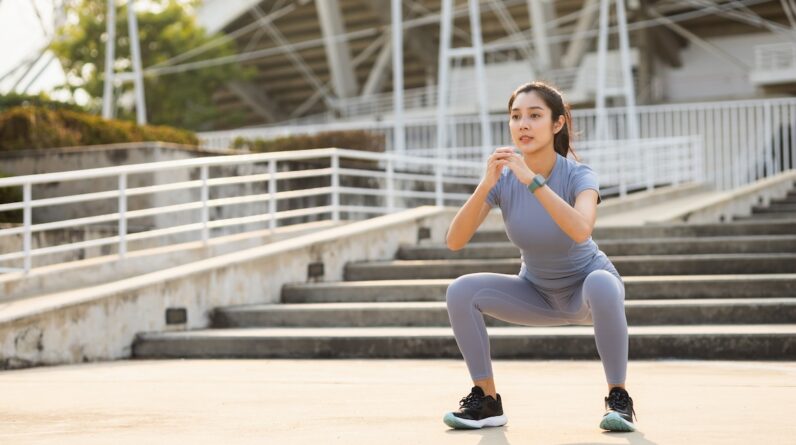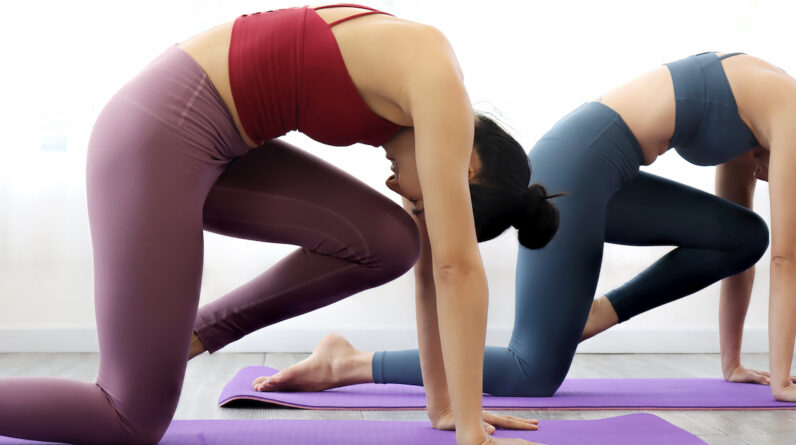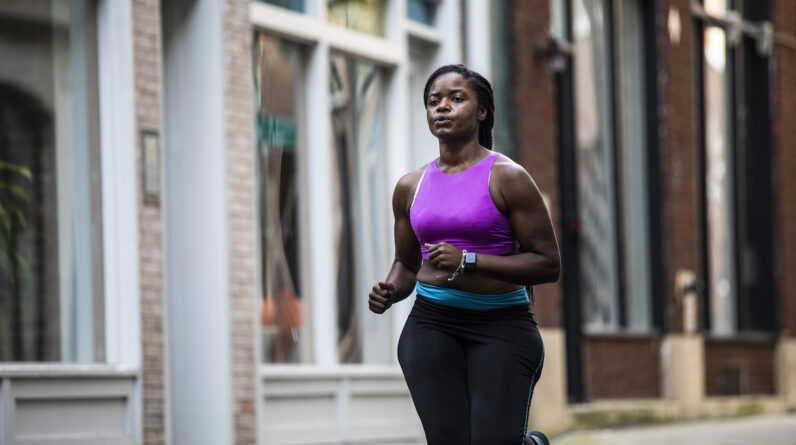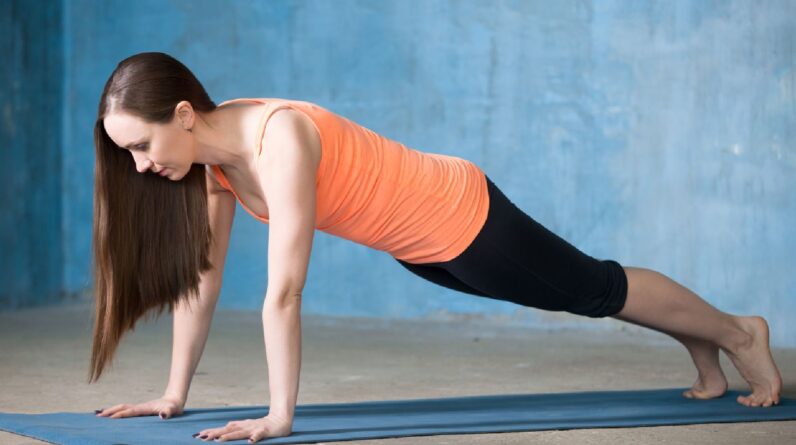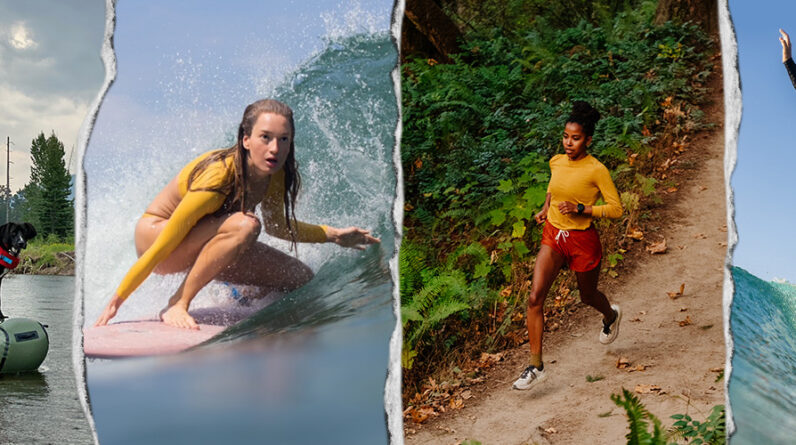
Meet four women whose love of outdoor activities inspire their environmental action.
Australian professional surfer Tully White’s visit to California for the Malibu stop of the World Surf League’s longboard tour was not going as planned. An oil spill to the south of Los Angeles meant that, each day, the precise location of the competition had to change based on where the oil floated. Among the fans, workers in hazmat suits scrubbed oil off of the beaches and wildlife.
“Everyone said it was common,” White says. “Like it was no big deal.”
“They’re actually living it and worried about it and thinking about it,” says Earthday.org president Kathleen Rogers.
The diverse experiences of athletes and outdoors people paint a broad picture of environmental disaster at every elevation and terrain—and subsequently spark action at every level, too.
For instance, as professional skier Sierra Quitiquit has traveled around the globe to countries like Japan and Switzerland, and seen once consistently snowy places like Alaska become more temperate, her skiing seasons have gotten shorter and shorter. (Researchers report that the average ski season was shortened by a whopping 34 days from 1982 to 2016.) Quitiquit has witnessed the impact this has had on businesses as well as athletes, and learned from the communities just how different things have become in recent years.
“As a skier, you spend a lot of time outside in the elements and you really become in tune with the rhythm of nature,” Quitiquit says. “Showing up on locations that traditionally had snow pack their entire history for as far back as it was written and there being no snow, it just is this feeling that something is seriously wrong.”
The IRA eventually passed in August 2022, and the EPA describes it as “the most significant climate legislation in U.S. history, offering funding, programs, and incentives to accelerate the transition to a clean energy economy [that] will likely drive significant deployment of new clean electricity resources.”
Rogers agrees that athletes are uniquely positioned to do the kind of heart- and mind-changing that supporting political action on climate change requires. She says that while celebrities like actors and singers are often considered “liberal,” athletes are viewed as more politically-neutral role models, and that hard-to-reach sectors of the public take what they have to say seriously.
“You’re trying to save winter because your career depends on it,” Rogers says. “It’s not perceived as anything shallow.”
Contrary to much of the environmental movement, in which women disproportionately drive action on climate, Rogers’s experience is that male athletes tend to be more visible in environmentalist initiatives (perhaps because society pays more attention to male athletes than female athletes in general). That makes Quitiquit’s and Tully’s involvement invaluable, as well as leaders like Olympic sailor Hannah Mills and rower Melissa Wilson, whom the Olympics have spotlighted for their activism. But Rogers wishes still more would lend their voices to the cause, and actually take the moments when they’re in the spotlight—such as when they’re sharing how they feel after a victory—to connect their sporting accomplishments with the need for environmental action.
“I do think they’re great spokespeople for this,” Rogers says. “We just don’t have enough of them.”
Luckily, professionals aren’t the only athletes getting involved. Kamilah Journét was a high school and college runner, and later became a high school track coach in Ventura County, California. While growing up, she recalls that there were days she was not allowed to run because of nearby fires and the potential danger of smoke inhalation.
A few years ago, she met the founder of Runners for Public Lands, an organization that seeks to imbue running culture with environmental responsibility through initiatives like reducing waste at races and mobilizing runners as climate activists. Around the same time, Ventura County experienced devastating wildfires, harkening back to the smokey days Journét experienced while running as a teen.
“It’s really hard for me to just completely disconnect from something that I so visibly see,” Journét says.
So when Runners for Public Lands asked Journét to be a member of the board, she was intrigued. As a younger woman of color, Journét realized it was a perfect way to take action on concerns she’d developed for the planet as a teen runner, and for the disproportionate way climate change affects people of color.
That’s not to mention the love that runners, or any athletes who spend much of their time outside, end up having for the outdoors. For instance, photographer, documentarian, and recreational fly fisher Katie Falkenberg describes the feeling of fly fishing as one of “awe”—so it’s only natural it’d become something she’d want to protect. “Catching a wild fish and then releasing it is just the most magical feeling to me,” Falkenberg says. “It is this brush with this wild thing that you hold in your hands, and then let go.”
After working for a decade at the Los Angeles Times, Falkenberg recently decided to go freelance, in part to tell stories about what she was witnessing in nature as a result of climate change: Namely, the warming of rivers and drying up of tributaries, as well as the wildfires that have wrought havoc on forests in Oregon. “Where we are in terms of climate change has been so tangible to me, but especially the last three or four years,” she says. “When I’m on the river or on the mountain, I’m constantly thinking of stories that I could tell.”
Today, Falkenberg makes films and documents those drying up riverbeds and the people working on their survival, hoping to inspire action by telling their stories. But she thinks that the best way to galvanize the fight is for more people to spend more time outdoors, fostering a relationship with—and responsibility for—our planet. (One small 2021 study even proved that spending just a week in the outdoors increased people’s sense of environmental responsibility.)
“I feel incredibly obligated to tell stories that might motivate people to get outside and to realize what is at risk, what we have to lose,” Falkenberg says. “If people aren’t outside recreating and doing these activities, there’s less people who are going to feel the desire to protect them.”
That desire to protect wild places is what connects these women who want to continue to surf, ski, run, fish, and otherwise live outdoors. Quitiquit refers to it as an “intimacy” with the snowpack. The way she bears witness to climate change happening in real time fuels her activism—and what she believes can empower athletes and anyone else who likes to spend time in nature, too.
“There’s so often a sentiment of like, ‘Who am I to lead?’ or ‘Who am I to lean into this, and what do I know?’” Quitiquit says. “There’s this sentiment that someone else should be solving this problem. But in reality, this challenge belongs to all of us.”



